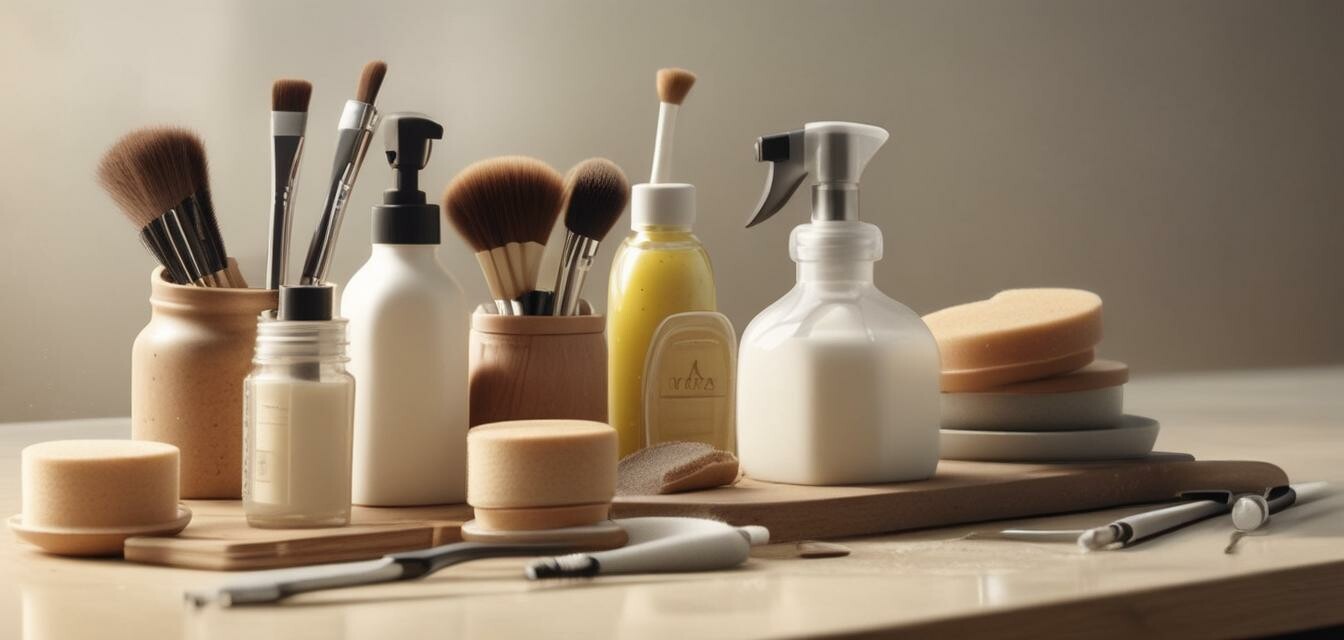
This article was generated using AI and is based on real customer reviews from the Amazon platform. It contains affiliate links, meaning we may earn a commission—at no extra cost to you. As Amazon Associates, we earn from qualifying purchases.
How to Create a Routine for Cleaning Your Beauty Tools
Key Takeaways
- Establishing a regular cleaning routine helps prolong the life of your beauty tools and maintain their effectiveness.
- Use appropriate cleaners and sanitizers for different types of tools.
- Adopting a consistent schedule simplifies the task and ensures you don't miss cleaning your essential tools.
Having a cleaning routine for your beauty tools is essential for keeping them in good condition and maintaining your skin's health. Dirty tools can harbor bacteria and other impurities, which can cause skin issues. Establishing a reliable routine allows you to enjoy beautiful results while using your beauty tools, making them last longer. In this article, we will guide you through creating an effective cleaning regimen, highlighting steps, tips, and best practices.
Why a cleaning routine is essential
Cleaning your beauty tools regularly is vital for several reasons:
- Hygiene: Dirty tools can lead to skin irritations and infections.
- Tool longevity: Proper cleaning can extend the lifespan of your tools.
- Better results: Clean tools provide better performance and application.
Steps for establishing a cleaning routine
Follow these steps to create a consistent cleaning routine for your beauty tools:
Step 1: Assess your beauty tools
Begin by identifying which tools you use regularly. Common items include:
| Tool Type | Usage Frequency |
|---|---|
| Makeup brushes | Daily |
| Sponges | Weekly |
| Nail tools | Bi-weekly |
| Facial tools | Every few uses |
Step 2: Create a cleaning schedule
Once you've assessed your tools, create a schedule that outlines when to clean each type of tool. Here’s an example:
| Tool Type | Cleaning Frequency |
|---|---|
| Makeup brushes | Every day |
| Sponges | Once a week |
| Nail scissors and clippers | Every two weeks |
| Facial tools (e.g., jade rollers) | After every use |
Step 3: Choose the right cleaning products
Using appropriate cleaning products is crucial. Here are some options:
- Gentle soap or shampoo for makeup brushes
- Alcohol or disinfectants for nail tools
- Specialized cleaners for sponges
- Water-based cleansers for facial tools
Best practices for cleaning
Follow these tips to enhance your cleaning routine:
Cleaning tips for beginners
- Rinse brushes with lukewarm water to prevent damage.
- Use a brush cleaning mat to remove any product buildup.
- Allow tools to air dry on a clean towel.
- Store tools in a clean, dry place.
Maintaining your beauty tools
Before we conclude, let’s discuss how to maintain your beauty tools:
- Store your tools properly by keeping them in a clean, organized space.
- Regularly inspect for damages, and replace any worn-out tools.
- Use Tool sanitizers for tools that require more frequent cleaning.
- Follow the manufacturer's instructions for care and upkeep.
Conclusion
Creating a cleaning routine for your beauty tools is an essential practice that leads to improved hygiene and tool durability. By following the steps outlined in this article, you'll ensure that your tools remain in great condition, enhancing your overall beauty experience. For more insights on maintaining beauty tools, check our collection of cleaning tips and buying guides to help you choose the best products for your routine.
Pros
- Enhances hygiene and skin health.
- Extends the lifespan of beauty tools.
- Easy-to-follow cleaning routines.
Cons
- Requires time and consistency.
- Need for specific cleaning products.